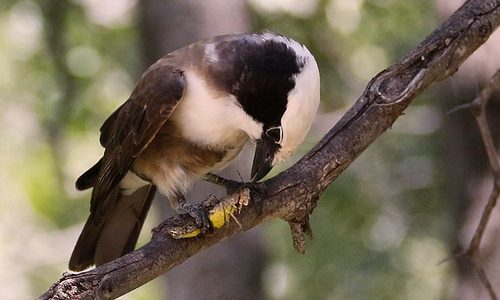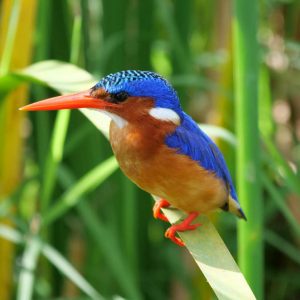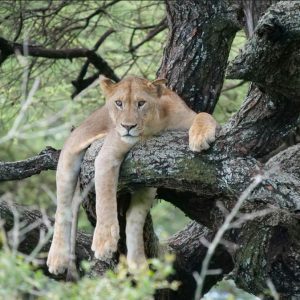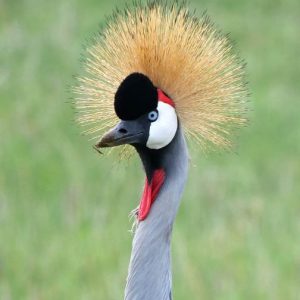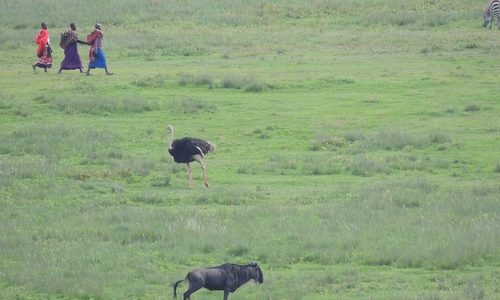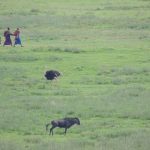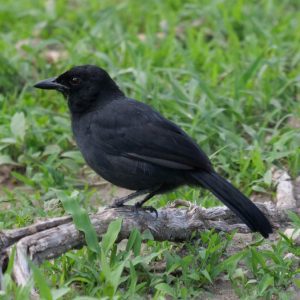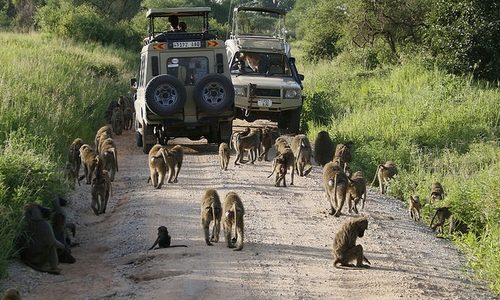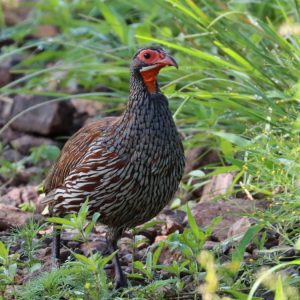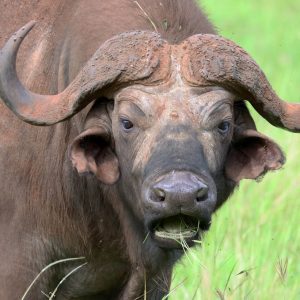16 Days Birding Tours and Wildlife Uganda
UGANDA BIRDING AND BIG GAME ANY TIME DEPARTURE TOUR:
This special Tour is fully guided by our Top local bird guide.
Day 1:Arrive Entebbe International Airport, meet and transfer to Hotel ( Bed & Breakfast only ) Over night at the Entebbe Travelers Inn .ACCOMMODATION INFO AT : http://www.entebbetravellersinn.com
Day 2: The Morning will be spent at leisure, recovering from Jet lag and trying to catch up with the local time and weather. The option would be after breakfast visiting the neighboring Entebbe botanical Gardens for Birding or Morning at leisure and afternoon visiting the Botanical gardens.
The gardens house a collection of species of plants of the tropical, sub-tropical and temperate zones, besides several shrubs and other plants regenerated naturally over the years. The collection as of 1998 numbered 309 species, 199 indigenous to Uganda, 122 with known medicinal value and 110 exotic. The gardens are a popular attraction for visitors of which some 40,000 per year are passing through the gates since the rehabilitation in 1998.
We will be birding the trails in the woodlands. Our first birds could include Palm-nut Vulture, Great Blue Turaco, Eastern Gray Plantain-eater, African Pied Hornbill, Splendid Glossy Starling and Orange Weaver.others may include the brown throated weaver¸ golden backed weaver, yellow backed weaver, grey headed gull,long-tailed cormorant, common squacco heron,yellow billedduck, pied kingfisher, giant kingfisher, swamp fly catcher, broad billed roller,black and white casqued hornbill, splendid glossy starling, black headed gonolek,, red chested sunbird, Ross’sturaco, pied hornbill, crowned hornbill, openbilled stork, great reed warbler, sedge warbler,and grey caped warbler . ACCOMMODATION INFO : http://www.entebbetravellersinn.com
Day 3: Today we will drive in the very earliest hours of the morning to the Shoebill wentland.This large wetland is the nearest accessible bird watching site on the shores of Lake Victoria. This is the home of the Shoebill stork. Other special birds on this trail include the African and Lesser Jacana , Blue-breasted Bee-eater, Papyrus Gonolek, White-winged Warbler, other birds in the area include the Pink-backed
Pelican, Long-tailed Cormorant, Goliath Heron, African Fish-Eagle, African Marsh-Harrier, Yellow-billed Duck, African Water Rail, Allen’s Gallinule, Malachite Kingfisher along with slightly more local species such as the Long-toed Plover, Blue-breasted Bee-eater, Blue-headed Coucal, Papyrus Gonolek, Papyrus Canary, Swamp
Flycatcher, White-winged Warbler.African Openbilled Stork, Grey Kestrel, Eastern Grey Plantain-Eater, African Green Pigeon, Black-and-white Shrike flycatcher may be the rare Weyn’s Weaver may be seen on the canoe. After the shoebill excitement,we will drive to back to Kampala and on to Mabira Forest arriving in the late afternoon. The accommodation at Mabira is basic with shared facilities in the heart of the forest. Night at Mabira Eco Basic Bandas
Day 4: To day we will spend the entire day birding in Mabira Forest,birds here include:, Yellow-throated and Speckled Tinkerbirds, Toro Olive Greenbul, Green-tailed Bristlebill, Fire-crested Alethe , Forest Robin, Blue-shouldered and Snowy-crowned Robin Chat, Nahan’s Francolin, Yellow billed Barbet, Jameson’s Wattle-eye, Tit Hylia, Superb Sunbird, White-shouldered Tit, Magpie Manikin, Green Crombec, Hairy-breasted Barbet, Black-throated Apalis, Black-and-white Shrike-Flycatcher, African Paradise Flycatcher, Blue-throated Brown Sunbird, Sabine’s Spinetail, Dusky Long-tailed Cuckoo, Velvet-mantled Drongo, Blue-throated Roller and Purple-throated Cuckoo-shrike. Mammals include Red-tailed and Black-and-white Colobus Monkeys, Bush Duiker and Western Tree Hyrax as well the grey chicked Mangabey. After the forest birding we will drive back to kampala at the Kolping House guest house. Kampala Kolping House is a modern guesthouse providing comfortable accomodation in a tranquil environment on the outskirts of Kampala. Our restaurant and offers buffet and a la carte meals as per your preference. We also have a well stocked bar for patrons to relax and enjoy moments. Professional staff providing quality service ensures that your visit and stay at Kampala Kolping House is always a memorable
Day 5: After breakfast at the Kolping Guest House, we will drive West words to Lake Mburo National Park. On the way in the country side we will pass by Ugandas Long Horned Ankole cattle near Lake Mburo National Park. On the way we will stop for species such as the Crested and Coqui francolins; Emerald-spotted Wood-Dove; Red-chested, Levaillant’s, Klaas’ and Dideric cuckoos; Blue-naped and Speckled mousebirds; Lilac-breasted Roller; Striped Kingfisher;Green Woodhoopoe; Common Scimitar-bill; Spot-flanked Barbet; Nubian and Bearded woodpeckers,others include the , Lesser Striped, Rufous-chested, Mosque, Red-rumped and White-headed Sawwing; Black Cuckoo-shrike; Red-backed Scrub-Robin; Rattling and Trilling ,Yellowthroated Longclaw; Chinspot Batis; Yellow-billed Oxpecker; African Penduline-Tit; Arrow-marked Babbler;Brubru; Wattled Starling; Greater Blue-eared Glossy-Starling; the African Darter, Water Thicknee,Hammerkop, African Water Rail, Spurwinged
Lapwing, Giant, Pied and Malachite Kingfishers. The park also hosts an array of mammals to include the buffalo, hippopotamus, warthog, Defassa waterbuck, bushbuck, and common duiker. The night will be at the basic Rwonyo Park Bandas.
Day 6: This morning we will drive out explorating the park by car for species such as Francolin, Red-necked Spur fowl,Black-bellied Bustard, African Wattled
Lapwing, Rufous-Naped Lark, Rufouschested Swallow, Yellow-throated Longclaw and Southern Red Bishop. In the afternoon we will go on a water safari by Boat exporing the shore of Lake Mburo. After the Boat cruise,we will return and drive out of the park,birding 7 Big game viewing on the way and on to Mabarara town for dinner and over night at the AGIP Motel Mbarara. Agip Motel, with its excellent location, diverse facilities, quality service and professionalism is the number one stop for anyone going through or stopping in Mbarara. Its friendly and fast service provided by a highly trained staff and its well kept and pleasant rooms make Agip the preferred place for international travellers, holiday makers, local business men, women and families. Agip will leave an imprint in your memory as wonderful place.
Day 7: Out of Mbarara town,driving further West words past the several swampy habitats on the way for birding breaks as we go and on into the higher elevation of Bwindi Impenetrable park and at Ruhija. Ruhiija is the Uganda birding spot that has caused Bwindi to be ranked the best birding spot in Africa by members of African Bird Club.
Roadside birding to Ruhiija provides a good chance of encountering Black Bee-eater, Augur Buzzard, Handsome Francolin, Red-throated Wryneck, Archer’s Robin Chat, Collared Apalis, Bronze Sunbird, Scarce Swift, Black Saw-wing, Cassin’s Grey and White-eyed Slaty Flycatchers, Brown-crowned Tchagra, Toro Olive Greenbul, Black-faced Rufous Warbler, Red-faced Woodland Warbler, Doherty’s, Many-coloured Bush-Shrikes, Ruwenzori Batis, Stripe-breasted Tit, Yellow Bishop, Collared Apalis, Purple-breasted Sunbird, Stripe-breasted Tit, White-naped Raven, Strange and Baglafecht Weaver, Dusky Crimson-Wing, Yellow Bishop, Yellow-bellied Waxbill, Black-and-White Mannikin, the rare Dusky Twinspot, and Streaky Seedeater, Grauer’s Rush Warbler, Lagden’s Bush-Shrike, Dusky and Shelley’s Crimsonwings. Other high elevation species occurring here are Olive Pigeon, White-starred Robin, Cinnamon Bracken Warbler and Mountain Illadopsis. Night at the Trekkers Tavern Cottages. . ACCOMMODATION INFO : http://www.trekkerstavern.com
Day 8: Day Birding in Ruhija
Day 9: Depending on the Option of the day,Today we have the Option of Tracking the Mountains Gorillas or just birding in the morning .Afternoon we will drive out of ruhija area,passing through the neck and on to Buhoma the lower side of Bwindi Impenetrable forest. Night at the Gorilla Resort. ACCOMMODATION INFO : http://www.gorillaresort.com/
Day 10: After an early breakfast, we travel to Queen Elizabeth National Park.
This Park is another with some of the highest biodiversity ratings of any game reserve in the world. Its varied habitat of open savannah, dense papyrus swamps and lakes, makes it one of the richest parks in Africa. Game in the park includes Elephant, a profusion of Hippos, the elusive Giant Forest Hog and handsome Uganda Kob, with occasional Lion and Leopard. Much of the journey will be a game-drive and provide good birding in an open East African Savanna setting. Look out for raptors, Helmeted Guinea Fowl, Red-necked Spurfowl, Barbets, Tinkerbirds, Kingfishers, Bee-eaters, Redchested Cuckoo, Lesser Striped Swallow, Black-lored Babbler, Grey-backed Fiscal-Shrike, Common Fiscal, Sunbirds and more. Mammals will be prominent here. There are many other key bird species in the area: White-faced Whistling & Knob-billed Ducks, African Spoonbill, Open-billed & Saddle-billed Storks, Collared Pratincole, Water Thick-knee, Spur-winged & African Wattled Plovers, African Skimmer, Martial Eagle, Buttonquail, Common Quail, Malachite Kingfisher, Verreaux’s Eagle-Owl, Black Bee-eater, White-tailed Lark,Fan-tailed widow, Black-headed & Papyrus Gonoleks, Carruther’s Cisticolas, Red-chested & Scarlet-chested Sunbirds, Swamp Flycatcher, Grey-capped & White-winged Warblers, Yellow backed & Slender-billed Weavers. Night at the Simba Safari Camp. ACCOMMODATION INFO http://www.ugandalodges.com/simba/index.php
Day 11: This morning we are scheduled for a boat trip.Another highlight of the tour is the launch trip on the Kazinga Channel, which allows a close approach to African Buffalo and Hippopotamus, as well as numerous waterbirds. Amongst many others, we hope to find GreatCormorant; two species of pelicans; African Openbill; Saddle-billed Stork; Glossy Ibis This boating bonanza allows you to view wildlife from the water whilst floating down the Kazinga Channel which joins Lake Edward and Lake George. Bloats of hippos, tribes of crocodiles and abundant birdlife, its banks also host herds of elephants and hordes of other wildlife. After all the excitement, we will drive around Queen Elizabeth and then on to the old and royal town of Fort portal . We will stay at th Rwenzori Guest House,this is run by a Dutch/English couple.It’s a comfortable place with a friendly and quiet atmosphere. It has five spacious rooms and one family room en suit. All rooms
are provided with hot and cold running, a shower, toilet, emergency lights and a private veranda over looking the garden.
Day 12: This is another exciting day,visiting the Chimpanzees!!! After an early breakfast, we will drive to Kibale forest National Park. Kibale is an extensive National Park, c760 sq.km, at an altitude of c.4,000ft’, protecting a large block of rainforest that offers excellent birding. It harbors the greatest variety and concentration of primates found anywhere in East Africa and is famous for its Chimpanzees. The Morning is scheduled for a Chimps Tracking, the last of the Great Apes on the Tour.
In the afternoon,we will drive to the eastern edge of the park into the Bigodi Wetland Sanctuary, a protected area situated in Magombe Swamp. Different trails are available to encounter a variety of birds (137 species), primates and butterflies. The revenue entirely supports the local community of Bigodi Village.
Possible birds include: African Crowned-Eagle, Afep Pigeon, Red winged Francolin, Black-billed Turaco, Narina Trogon, Black Bee-eater, White-headed Wood Hoopoe, Yellowrumped Tinkerbird, Grey-winged Robin-chat, African Broadbill, Willcock’s & Thick-billed Honey guides, Cassin’s Honeybird, Mountain Wagtail, Velvet-mantled Drongo, Petit’s Cuckoo-Shrike, Joyful &Honey guide Greenbuls, Banded Prinia, Masked Apalis, Black-and-white Flycatcher, Pink-footed Puffback,Chestnut-winged Starling, Superb, Green-headed & Green-throated Sunbirds, Dark-backed Weaver.
After the birding in the wetland, we will return to fortportal town, for Dinner and over night.
Day 13: Today we have a relatively long drive to Masindi via the Budongo forest on a dirt road,when in Budongo,we will have a quick visit through the Budongo Forest where species such as the Cassin’s Hawk- eagle , Nahan’s Francolin, Cassin’s sabine’s spinnetails , Chocolate-backed ,blue-breasted and African dwarf Kingfishers , piping Horn bill , Red sided Broadbill , Green- breasted Pitta , puvel’s Illadopsis , spotted Greenbul ,Fire-crested Alethe , Black-eared ground thrush , Black-capped Apalis , brown -crowned Eremomela, Grey and yellow longbills , yellow footed Flaycatcher , Ituri batis , Jameson’s wattle-eye, Chestnut- capped , Flaycatcher , Brown Twinspot and Grey- headed Olive backlight. may be spotted. We will then drive on to Nyabyeya Forestry College Rest house. The accommodation is basic but with private facilities in the room .
Day 14: After an early Breakfast, we will drive again to the Budongo forest doing the famous Royal Mile.Today our birding will be centered on the well-known “The Royal Mile,”a wide forestry track considered to be the country’s premier forest birding locality. Among the numerous specials we hope to find include: Tambourine Dove; Yellowbill, Chocolate-backed, Blue-breasted and Dwarf; the huge White-thighed Hornbill; Yellow-spotted, Hairy-breasted and Yellow-billed barbets, Western Black-headed Oriole;Green Hylia; Gray and Yellow longbills; the rarely encountered Uganda Wood-Warbler; Gray, Buff-throated, Black-throated, and the stunning Black-capped apalises; Rufous-crowned Eremomela; Chestnut-capped Flycatcher; Purple-headed Glossy- Starling; Little Green, Green, Collared, After Lunch,at our accommodation,we will drive to Murchison Falls National Park via the spectacular butiaba escarpment with starning views of Lake albert. Evening at the Red Chilli Rest House. ACCOMMODATION INFO
http://www.redchillihideaway.com/paraa.htm
Day 15: This is our Last big Game viewing destination in Uganda on the Tour .
The earth literally trembles at Murchison Falls, one of the world’s most powerful flows of natural water fall.
A variety of unique habitats and lots of superb birds make a visit to Murchinson Falls National Park a must for every birder.The dry woodlands,are an excellent area to look for Shikra, Grey Headed Kingfisher; Red throated Bee-Eater and Bar-breasted Firefinch.
Definitely One of the highlights of a visit to Murchisons falls National park is the launch trip from Paraa to the foot of Murchison Falls,here: Hippos and crocodiles are abundant, and you will see elephants, buffaloes, waterbucks at close ranges. The Game drive will also offer avariety of game and woodland birds too.Should we miss the morning Boat,we will schedule for the afternoon boat.
Murchison Falls offers variety of bird life ranging from the giant Goliath heron to Grey, Purple and Striated (or Green-backed) Herons, others birds will include the Little Bittern,, Saddle-billed Stork, White-faced Whistling Duck,, Knob-billed Duck, African Marsh Harrier, Black Crake, African Jacana, Senegal Thick-knee, Long-toed and Spur-winged Plovers, Rock Pratincole, Blue-headed Coucal, Pied and Malachite Kingfishers, beautiful Red-throated Bee-eaters, Lesser Swamp Warbler Swamp Flycatcher and copper sunbird,.other possibilities will include:Shikra, Little Sparrowhawk, Crested Francolin,Blue-spotted and Black-billed Wood Doves, Diederik, Black, Black-and-white and Levaillant’s Cuckoos, Senegal and White-browed Coucals, Little and White-rumped Swifts, Blue-breasted, Madagascar and Swallow-tailed Bee-eaters, Broad-billed Roller, Common Scimitarbill, Black-billed Barbet, Cardinal Woodpecker, Greater Honeyguide, Sooty Chat, Moustached Grass-Warbler, Marsh Tchagra, Sulphur-breasted Bush Shrike, Yellow-mantled Widowbird, Black, Black-winged Red and Northern Red Bishops, Cardinal and Red-billed Queleas, and Yellow-fronted Canary. ACCOMMODATION INFO http://www.redchillihideaway.com/paraa.htm
Day 16: Drive to Kampala via the might Top of the Murchison falls, and evening Flight out.

